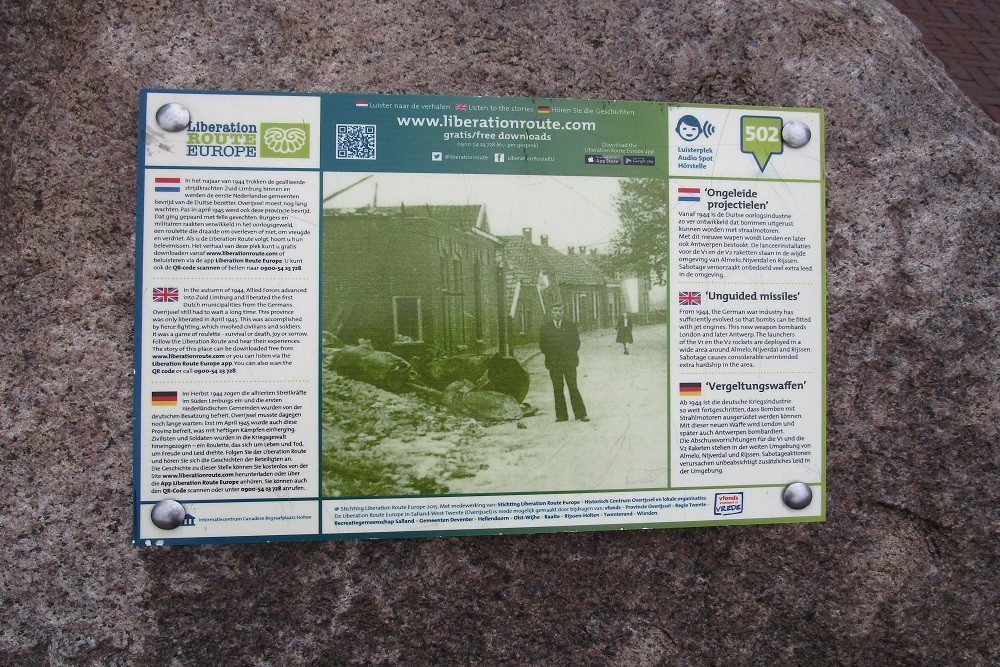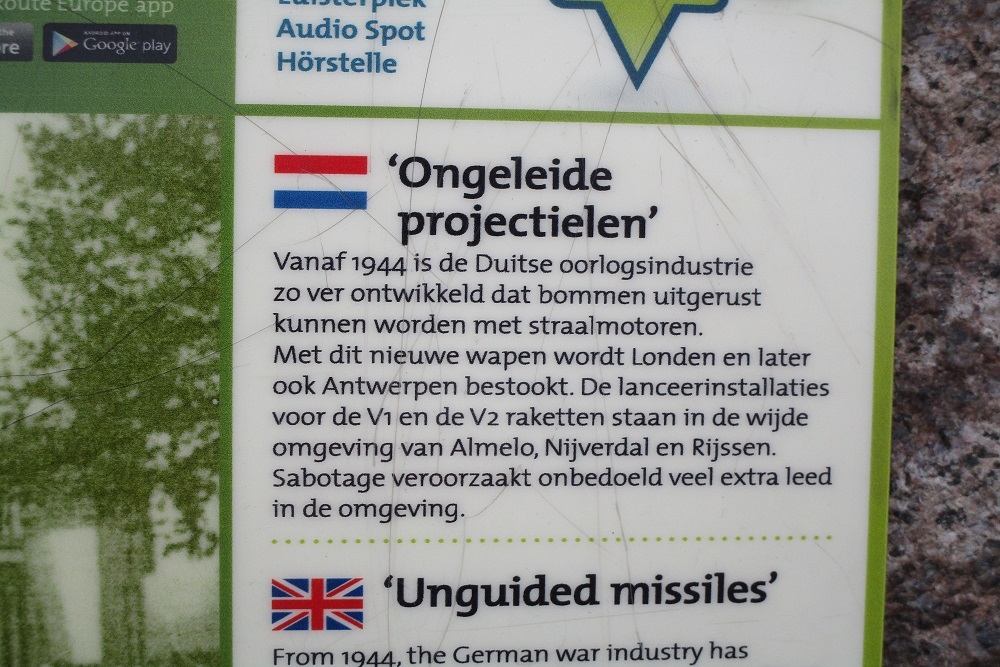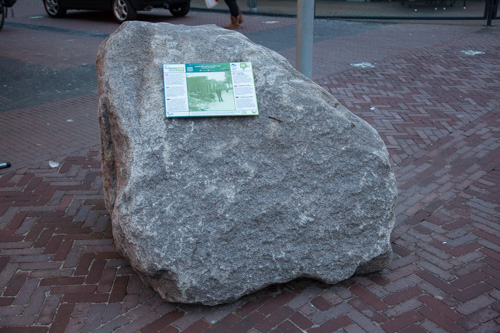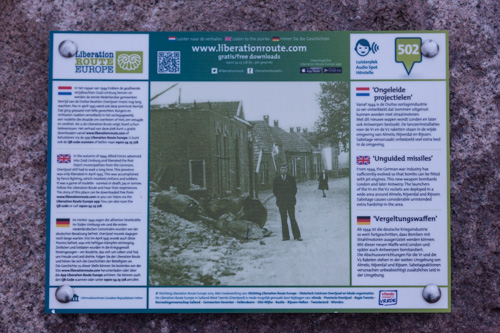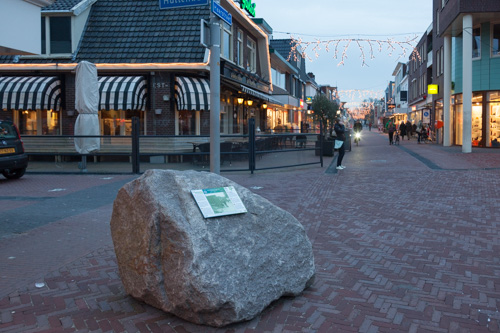Liberation Route Marker 502: Unguided missiles
Unguided missiles
From 1944, the German war industry has sufficiently evolved to fit jet engines to bombs. This new weapon bombards London and later Antwerp. The mobile V1 and V2 rocket launchers are extensively deployed around Almelo, Nijverdal and Rijssen. Sabotage causes considerable unintended extra suffering in the area.
Everyone who lived in the area between Almelo, Nijverdal, Deventer and Zutphen in the winter of 1944-1945 knew the sound of sputtering rockets. They were flying bombs, equipped with jet engines. More popularly known as the V1s and V2s. The Germans had named this new weapon “Vergeltungswaffe 1” in retaliation for the invasion of Normandy and all the losses that followed.
The weapon had been developed under great pressure from Hitler by German engineers. With the help of countless forced laborers, they were built. First in Peenemünde on Germany's northern coast, later in abandoned mines in northern France. Under inhumane conditions, forced laborers saw a chance to sabotage the production of these unmanned jetliners. No wonder, then, that when these weapons were launched or in flight, many things often went wrong.
And in the night of March 25-26, 1945, just a few days before the liberation, things in Rijssen unfortunately also went enormously wrong. A V1, fired from Almelo, possibly also made unreliable by sabotage, crashes in the middle of the night with a tremendous thud on the Huttenwal in the center of the town of Rijssen. Nine people are killed in the process.
Audiospot - Unguided missiles
Liberation Route Europe is a certified Cultural Route of the Council of Europe. With hundreds of sites and stories in nine European countries, the route links the main regions along the advance of the Allied Forces in 1943-1945.
The entire route consists of themed routes that can be travelled by by hiking, walking, cycling and car. These routes pass numerous historical and interesting sites and tell stories from a multitude of perspectives that were important in the final phase of World War II.
Many routes feature listening spots, offering the opportunity to listen to a historical story at a location. In addition, many ‘Vectors of Memory’ have been placed, indicating that the passer-by is on one of the Liberation Routes.
The routes can be found on the Liberation Route Europe website or in the app through which many stories can also be listened to.
Do you have more information about this location? Inform us!
Source
- Text: TracesOfWar & Liberation Route Europe
- Photos: Dick de Bruijne (1, 2), Arjan Vrieze (3, 4, 5)
Nearby
Museum
Point of interest
- Double V1 launch location Rijssen - Rijssen
- V1 Launch Location Wierden - Wierden
- NAD Camp Wierden II - Wierden
Monument
- Memorial Former Synagogue Rijssen - Rijssen
- War Memorial Rijssen - Rijssen
- Memorial Jewish Cemetery Rijssen - Rijssen
Cemetery
- Dutch War Graves Municipal Cemetery Rijssen - Rijssen
- Dutch War Grave Municipal CemeteryEnter - Enter (Wierden)
- Holten Canadian War Cemetery - Holten
Remembrance Stone
- Stumbling Stones Walstraat 40 - Rijssen
- Stumbling Stones Haarstraat 115 - Rijssen
- Stumbling Stones Boomkamp 25 - Rijssen
